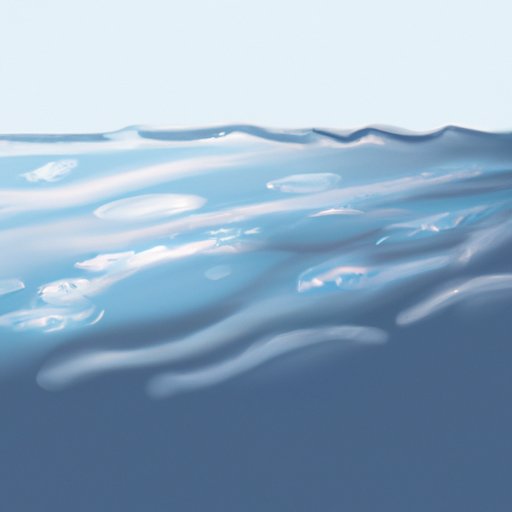Introduction
Drawing water can be a challenging task for those who are just starting out in the world of art. It requires an understanding of color theory, perspective, reflections, and light in order to create a realistic watery scene. This article will provide a step-by-step guide and helpful tips to help you master the art of drawing water.
Step-by-Step Guide to Drawing Water
The following steps will guide you through the process of drawing water:
Sketching Out the Scene
The first step is to sketch out the scene. This includes determining where the horizon line is, what type of body of water you’re drawing (a lake, river, ocean, etc.), and any objects that may be in the foreground or background. Take your time with this step as it will serve as the foundation for the rest of your drawing.
Adding Reflections
Once you have the basic outlines sketched out, it’s time to add reflections. This involves adding the shapes of the objects that are reflected on the surface of the water. Pay attention to the angles and curves of the reflections as they will help create a realistic effect.
Applying Color and Shading
Now that you have the basic outlines and reflections sketched out, it’s time to apply color and shading. Start by adding a base color to the entire scene. This will provide a foundation for the other colors and help create depth. Then, use darker colors to create shadows and lighter colors to create highlights. By using various shades of colors, you can create a more realistic effect.

Tips for Creating Realistic Water Effects
In addition to the step-by-step guide above, there are a few tips that can help you create a realistic watery scene:
Use Contrasting Colors
Using contrasting colors is a great way to create a realistic watery scene. Try using dark colors for shadows and light colors for highlights. This will help create a sense of depth and movement in the water.
Create Depth with Layers
When creating a watery scene, it’s important to use layers. Start by adding a base layer of color, then add darker and lighter colors in layers to create depth and realism. This will help make the water look more natural.
Add Details like Ripples, Foam, and Bubbles
Adding details like ripples, foam, and bubbles can help create a more realistic watery scene. These elements will help bring the scene to life and make it look more natural.

Using Color and Shading to Create a Watery Scene
Using color and shading is key to creating a realistic watery scene. Here are some tips for using color and shading effectively:
Utilizing Color Theory
Understanding the basics of color theory is essential when drawing water. Utilize the primary and secondary colors to create a range of hues, shades, and tints. This will help create a more realistic watery scene.
Blending Colors to Achieve a Soft Look
Using a blending technique is another great way to create a realistic watery scene. Blending colors together will help create a soft, dreamy look that will make the water appear more lifelike.

Understanding Perspective When Drawing Water
Perspective plays an important role in creating a realistic watery scene. Here are some tips for understanding perspective when drawing water:
Applying Linear Perspective
Linear perspective is a technique used to create the illusion of depth on a two-dimensional surface. When drawing water, use linear perspective to create the illusion of depth and distance. This will help make the water look more realistic.
Adding Atmospheric Perspective
Atmospheric perspective is a technique used to create the illusion of fog or haze. When drawing water, use atmospheric perspective to create the illusion of fog or mist over the water. This will help create a more realistic watery scene.
Adding Reflections and Light to Make Water Come to Life
Adding reflections and light is a great way to make water come to life. Here are some tips for adding reflections and light to your watery scene:
Working with Reflections
When adding reflections to your watery scene, think about the angle of the light source and the shape of the object being reflected. This will help you create a realistic reflection that will make the water look more natural.
Capturing the Play of Light
Light plays a huge role in creating a realistic watery scene. Use light to create highlights and shadows on the surface of the water. This will help make the water look more natural and give it a sense of depth and movement.
Conclusion
Drawing water can be a challenging task, but with the right knowledge and practice, it can be done. This article provided a step-by-step guide and helpful tips for mastering the art of drawing water. We explored how to use color and shading, perspective, reflections, and light to create a realistic watery scene. With these tools, you’ll be well on your way to becoming a master at drawing water.
We hope this article has helped you gain a better understanding of how to draw water. Remember to take your time and practice often. With enough practice, you’ll be able to create beautiful, realistic watery scenes.


